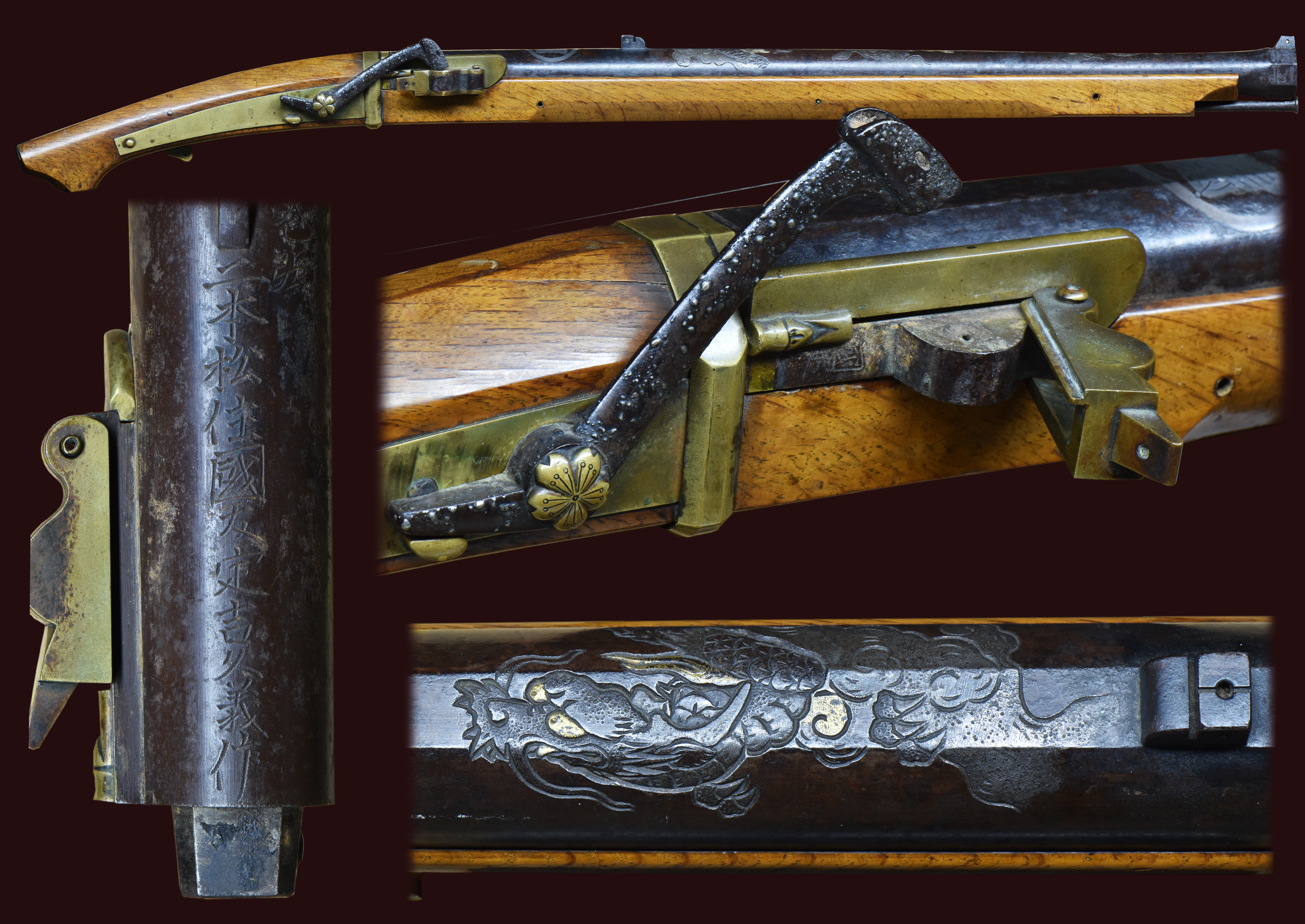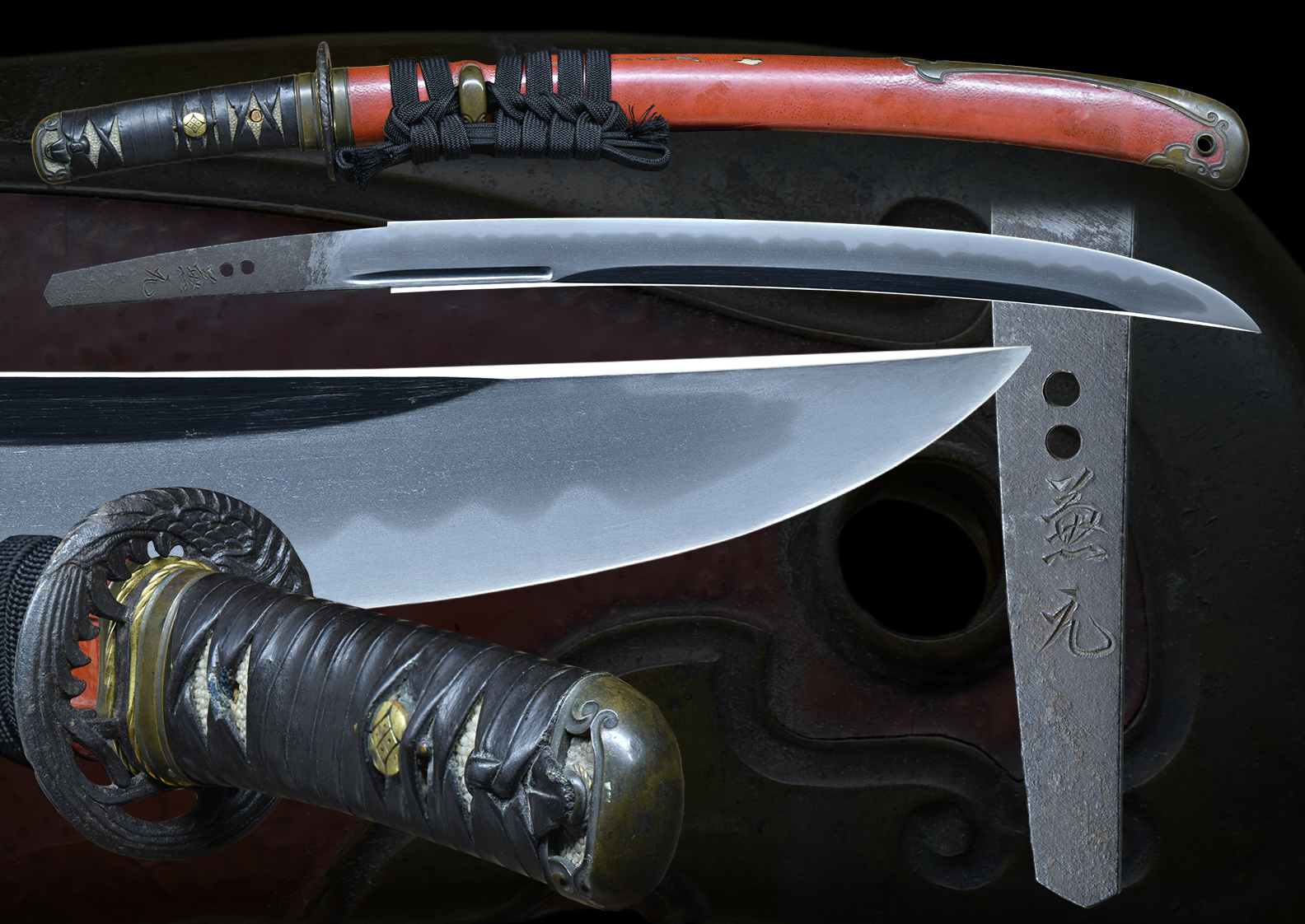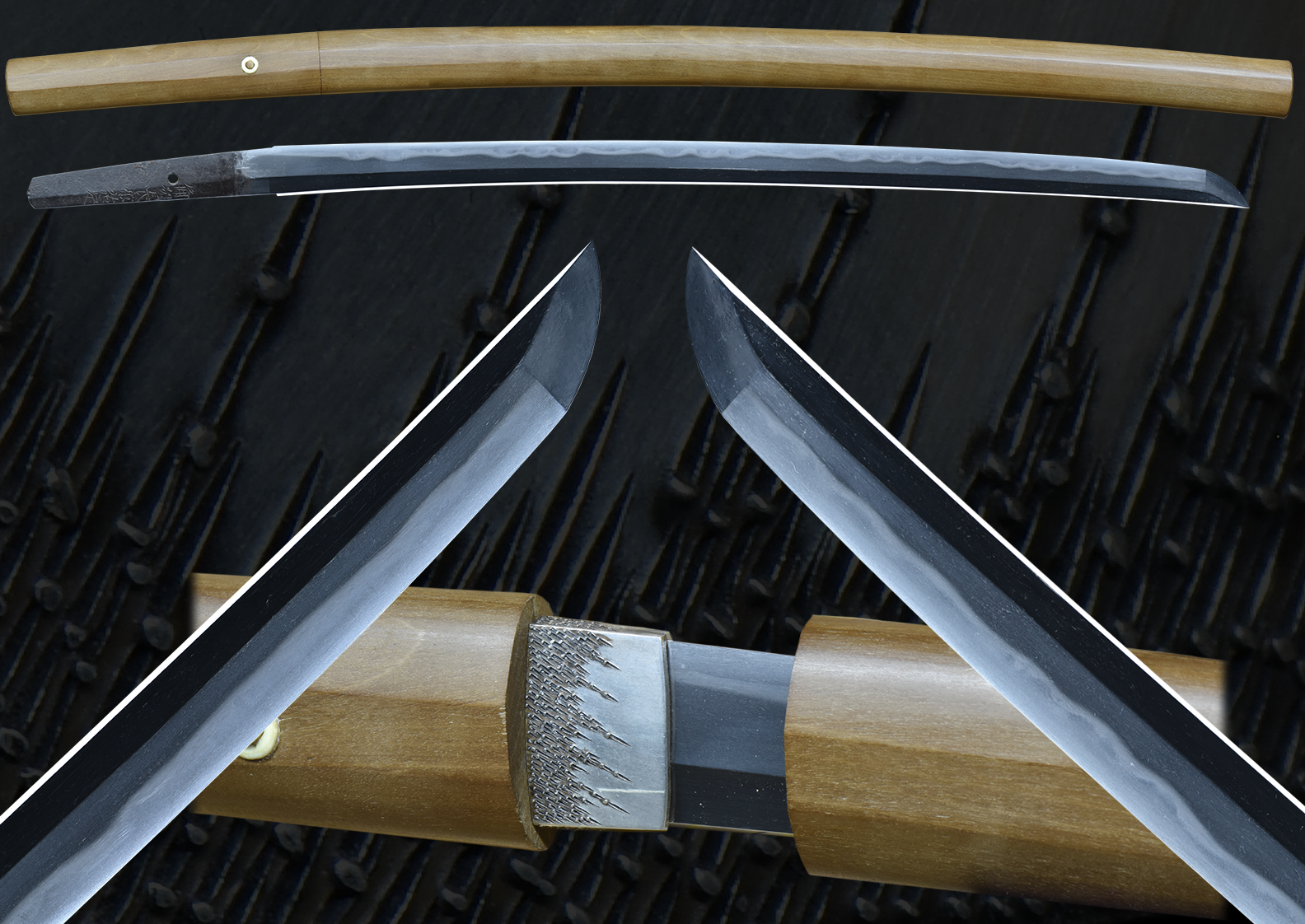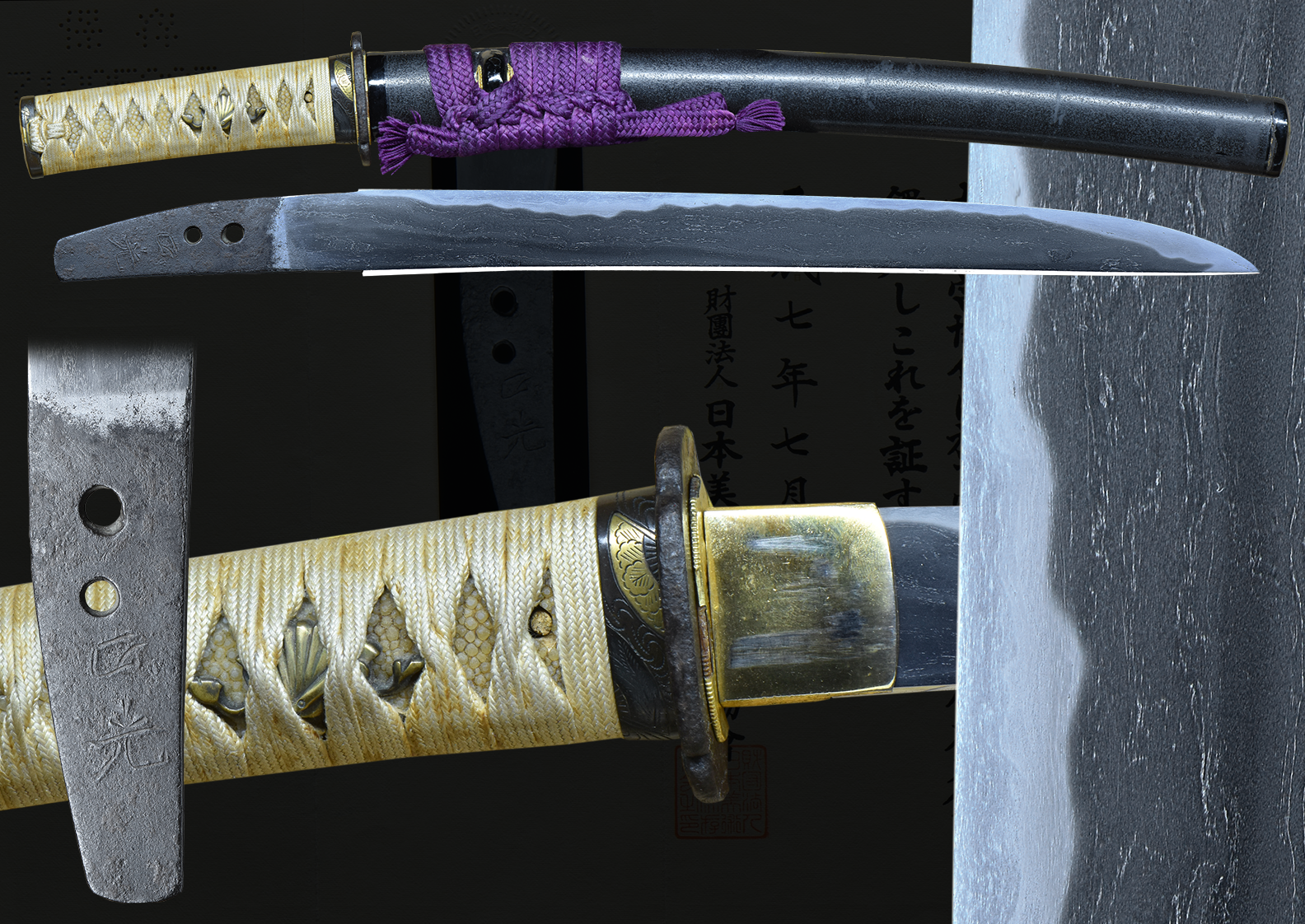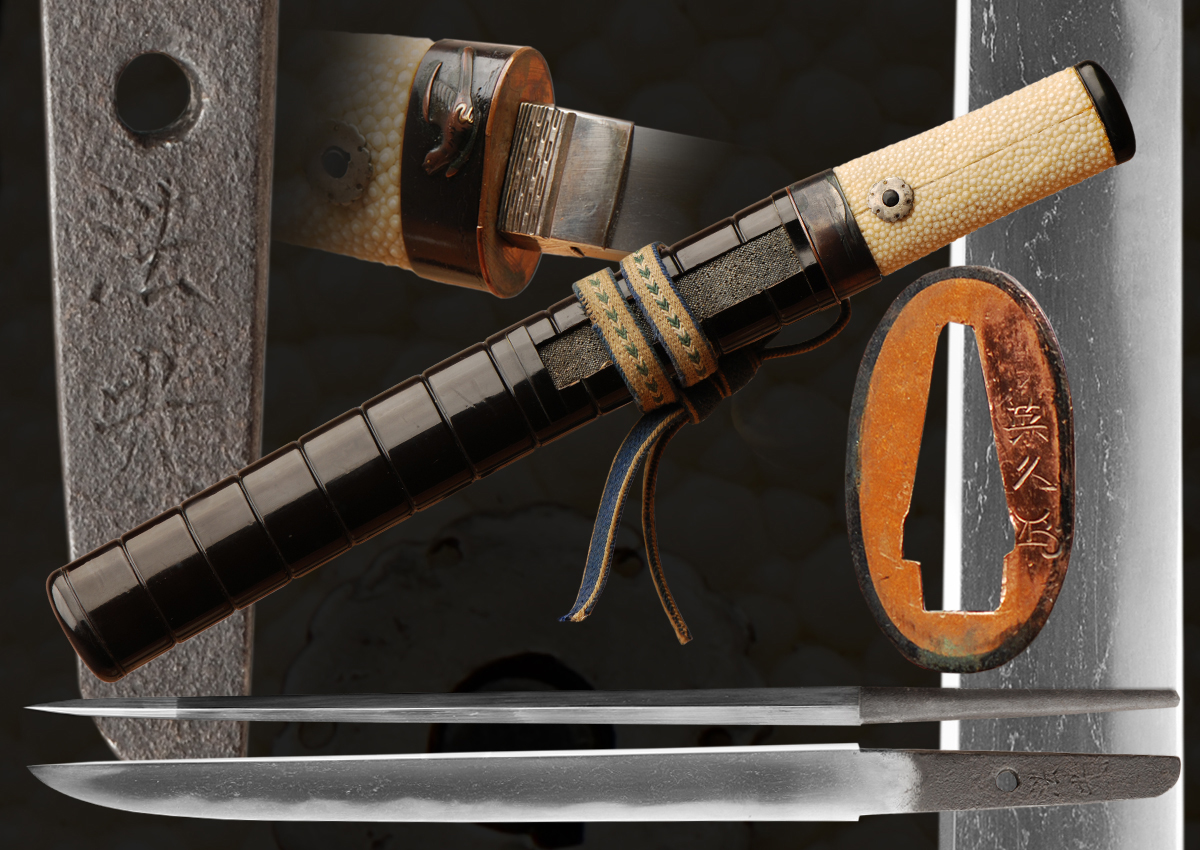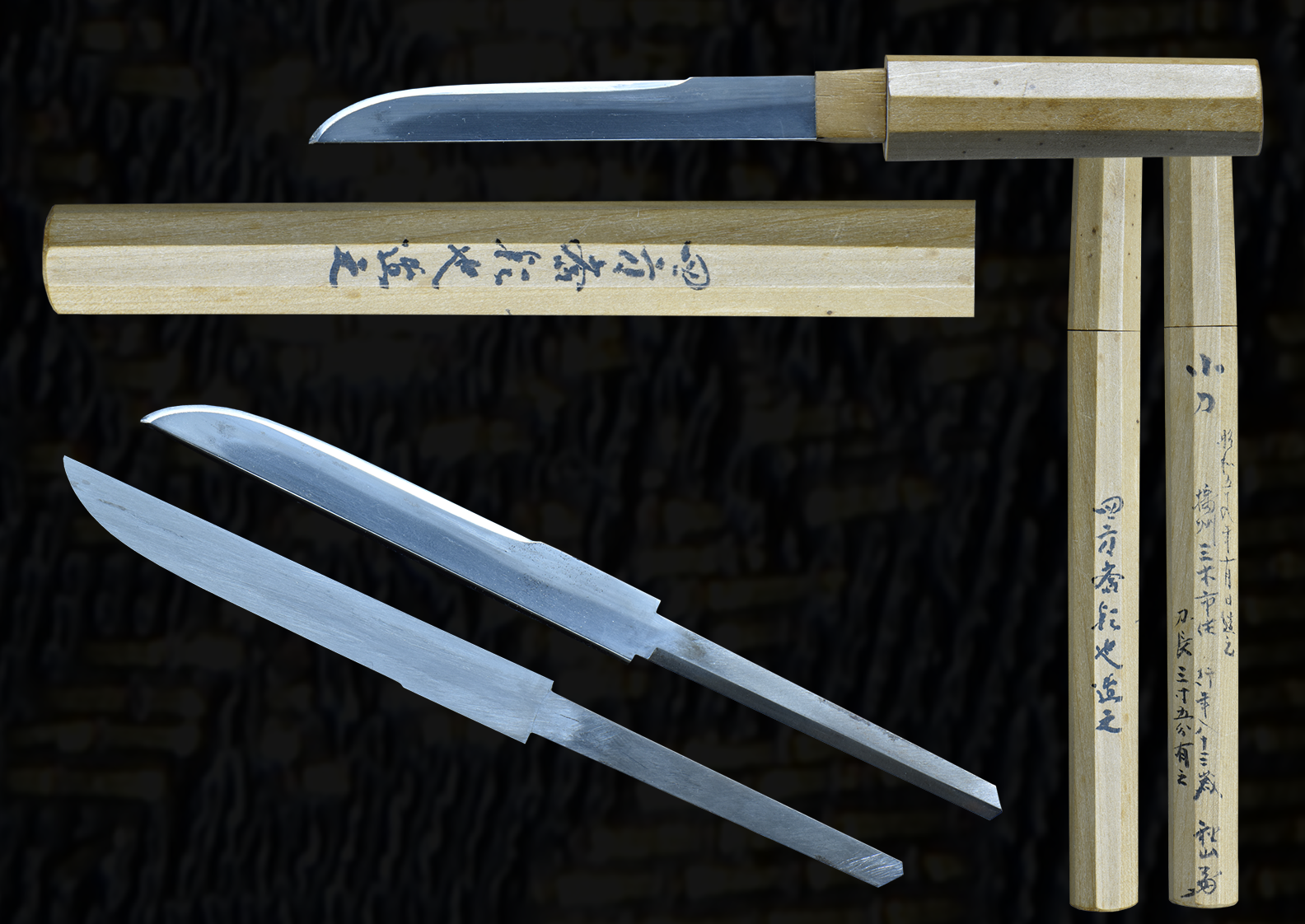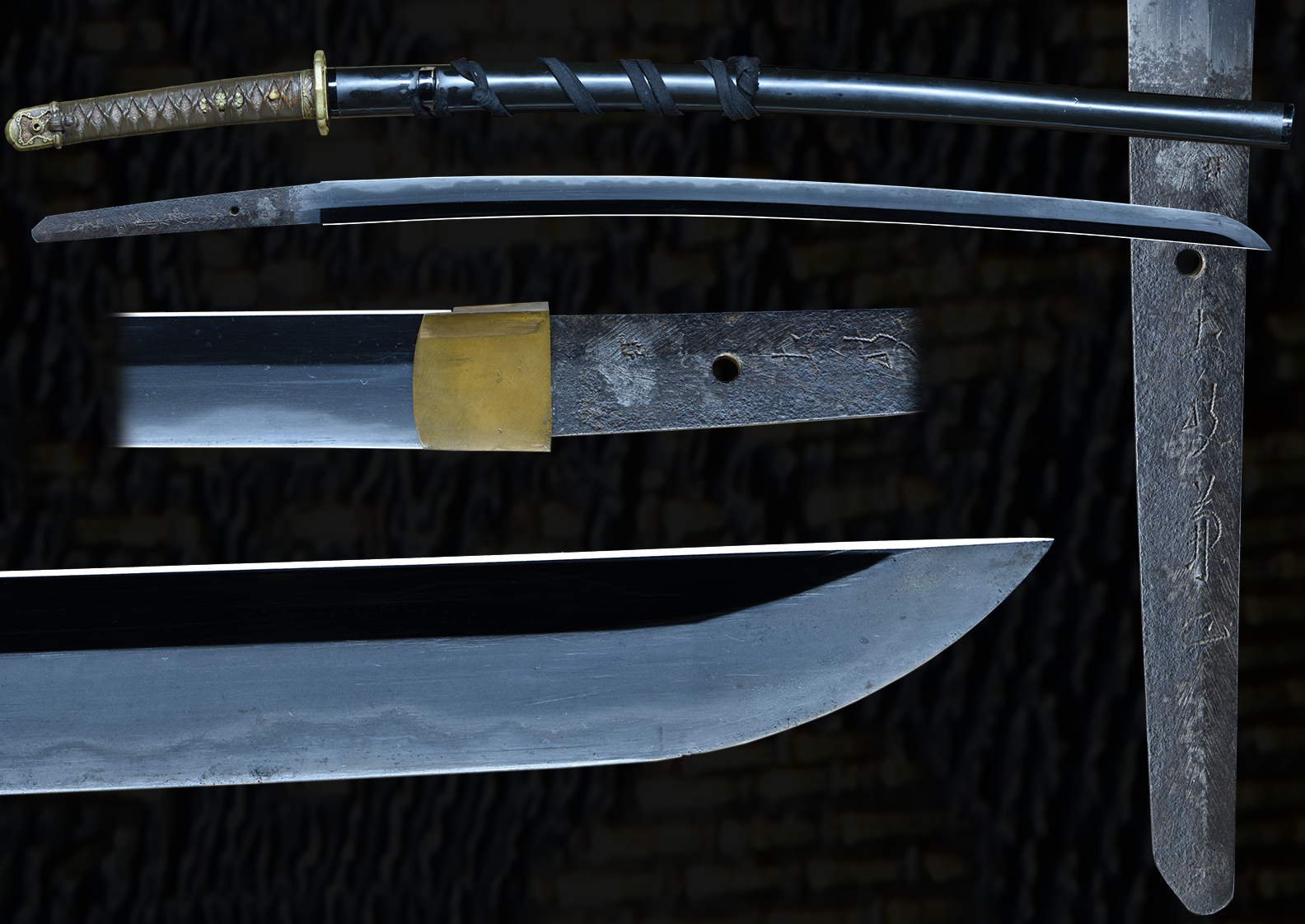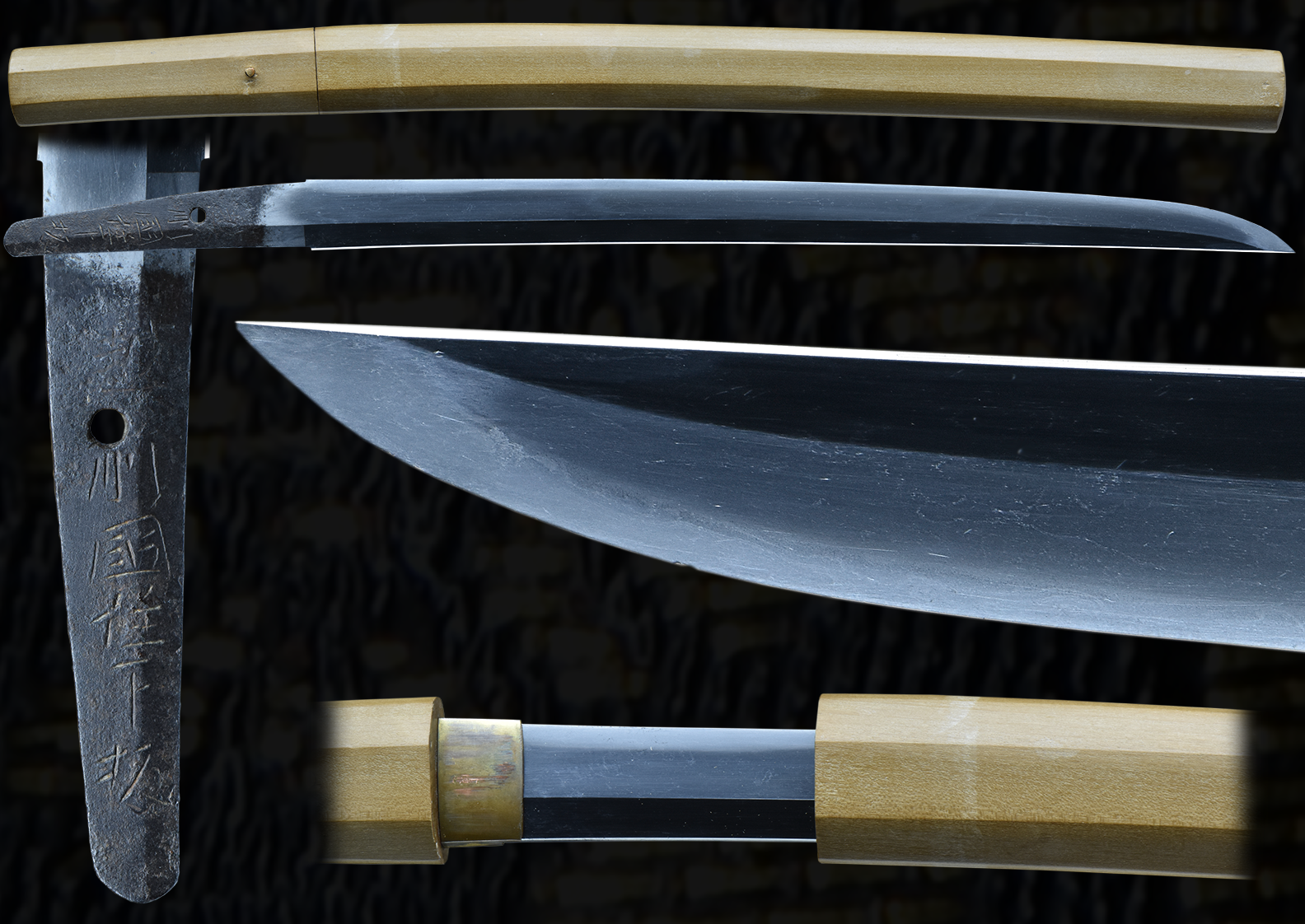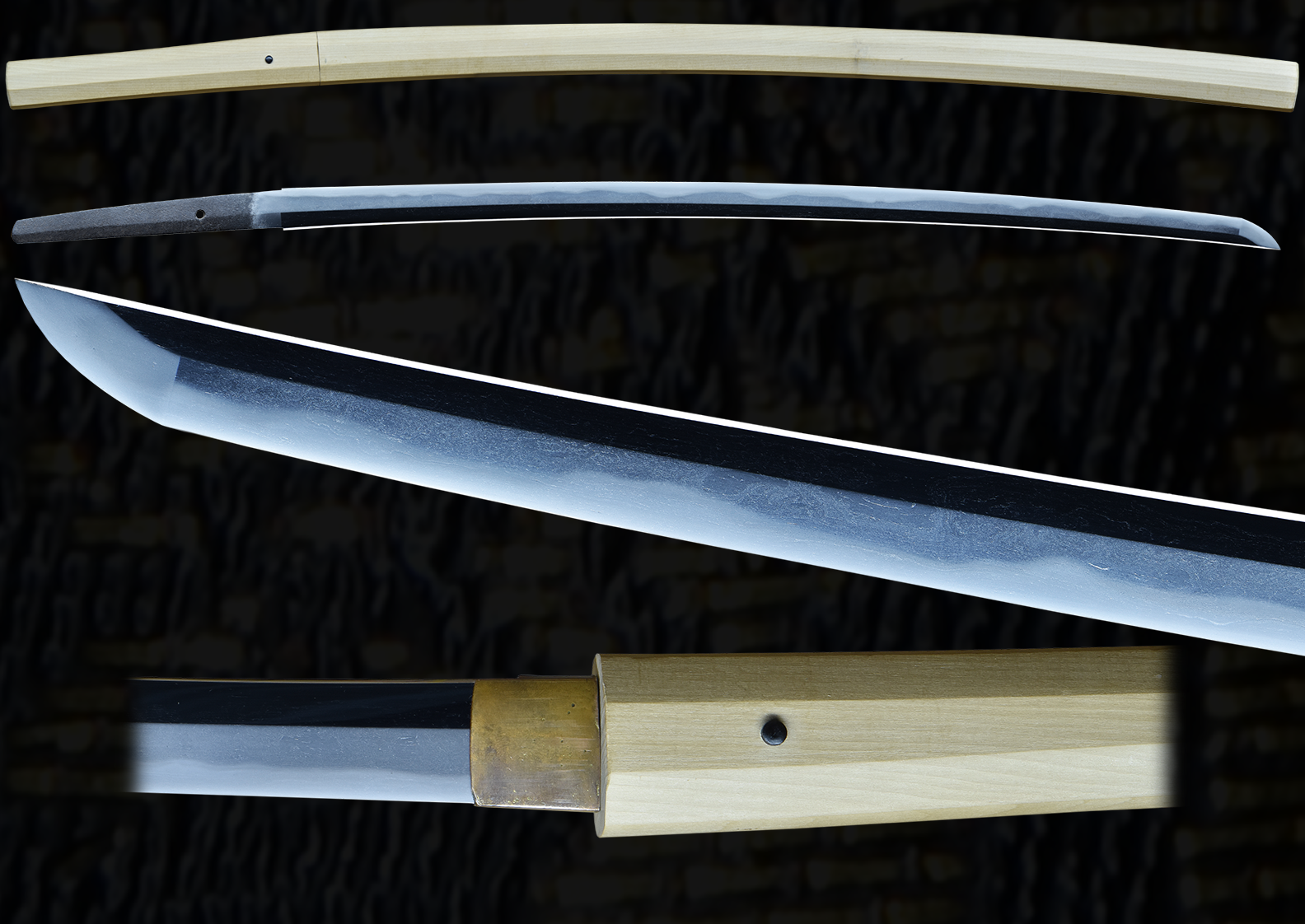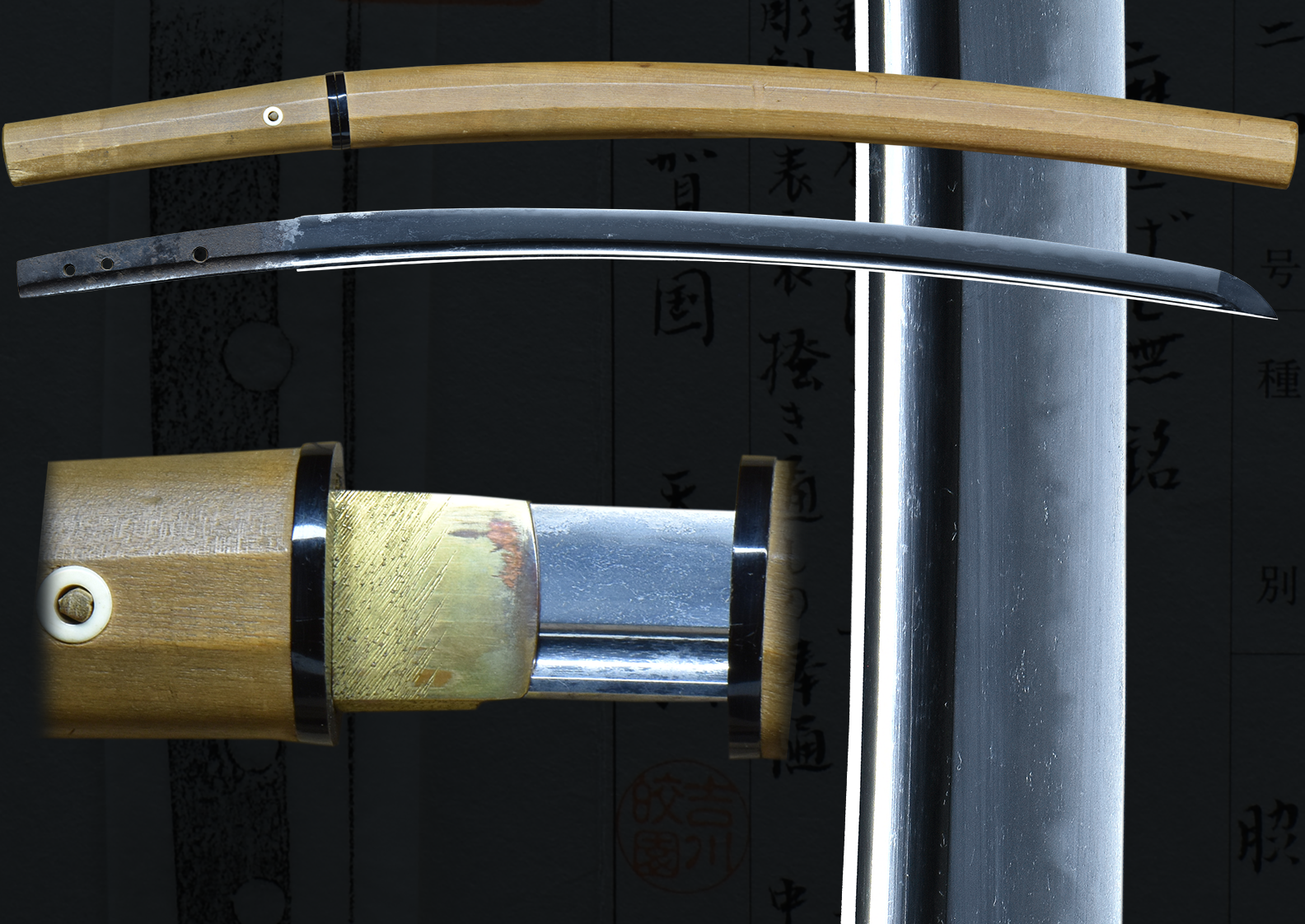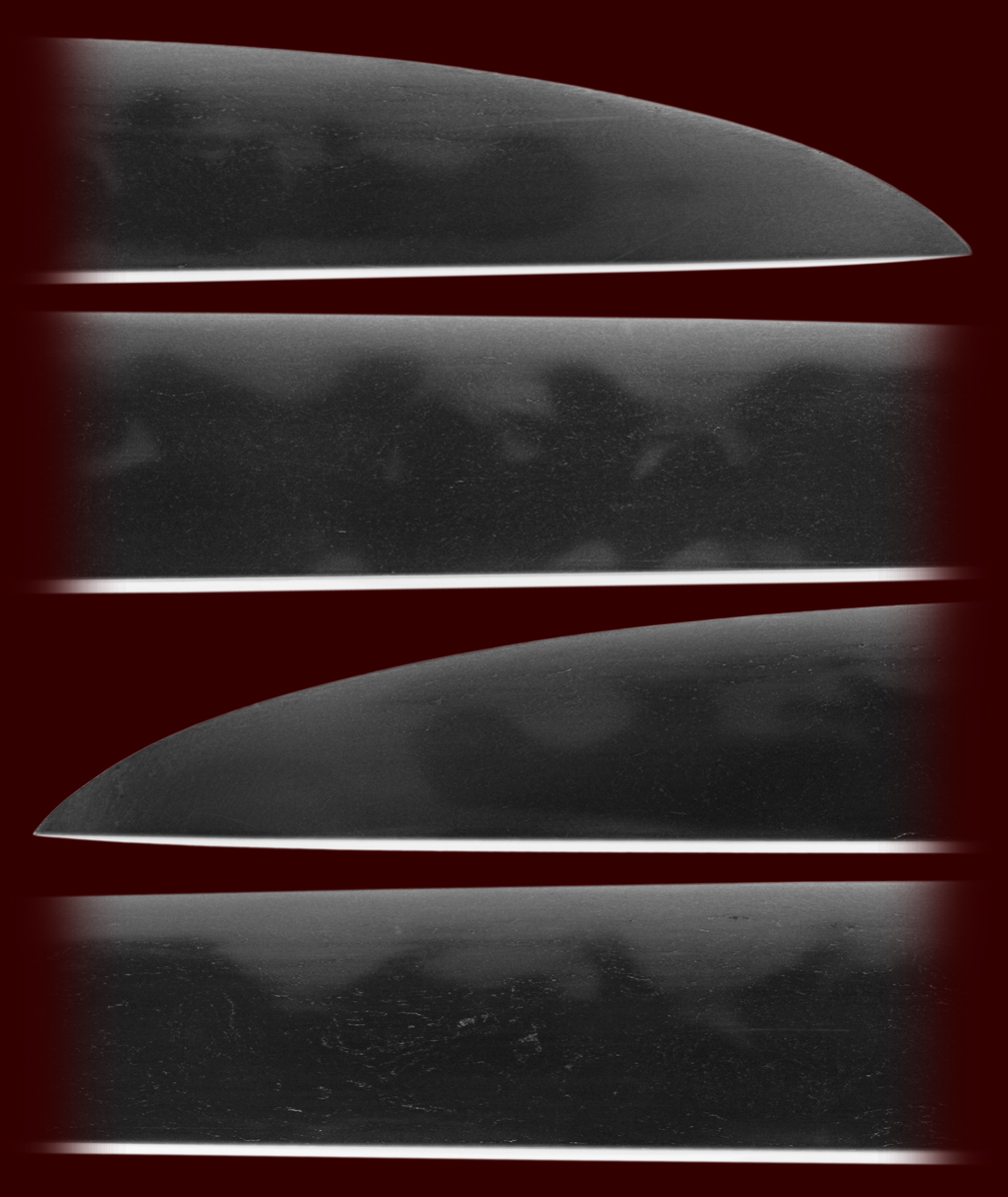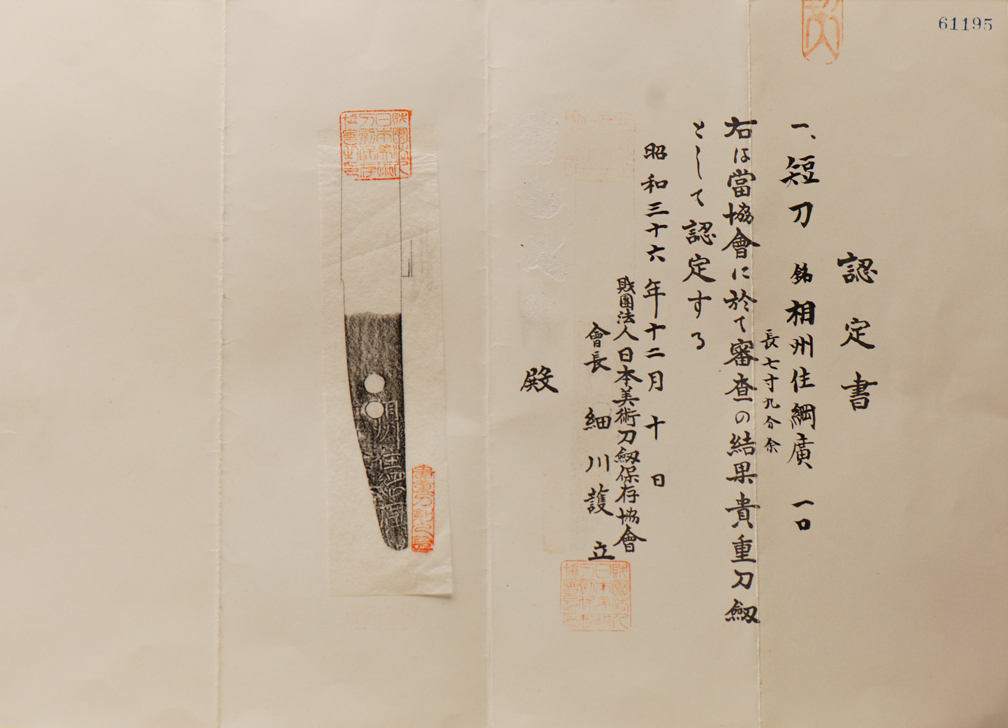This fine quality tanto was made by Soshu Tunahiro. It has many classic details in the blade of the soshu school and more importantly of the smith. The Tunahiro line of smiths is very famous and it can be said that their swords and daggers are highly regarded by collects. This tanto has an abundance of activity in the hamon. It almost looks like flames on the blade itself. The hada is pronounced and rich looking. This size of tanto is very commonly see in as they were the style at the time and generally adorned with fine fittings. This is a koto era sword with interestingly older papers that show that this blade has been stored away for many years.
Information on The Sue-Soshu School
Entering the Muromachi Period, Soshu smiths who were descendants of Masamune, who is one of the greatest smiths in the history, came to lose their brilliance and their forging skill declined. They made tanto and wakizashi with wide mi-haba and saki-zori that had not been seen before. Sue-Soshu smiths temper hitatsura in nioi-deki like Shimada smiths. Hamon consisting of brilliant nie by the great Soshu smiths of the Kamakura and Nambokucho Periods are not seen anymore in this period. The smith names of Hiromitsu, Akihiro, Masahiro and Hiromasa are succeeded up to in this period. In addition, Hirotsugu, Fuyuhiro, Sukehiro and Takahiro are active in this period. There appear to be a few generations of these smiths except Takahiro. ‘Kokon Mei Zukushi’ says that Hirotsugu and Sukehiro are related to a smith named Yoshihiro who moved from Yamato Province in the late Nambokucho Period, but I think it is too early to confirm their lineage. Tsunahiro who is said to have been a student of Tsunaie, who was himself a student of the 1st Shimada Yoshisuke, was a skilful smith amongst them and demonstrates a Soshu-den that reminds one somewhat of the workmanship of old Soshu smiths. Sue-Soshu smiths liked to carve horimono on their tanto and wakizashi. Tsunahiro was the most skilful engraver and the smith name is succeeded up to the Edo Period. There are three smiths called Yasukuni, Yasuharu and Yasuharu who were active around the same time and are related to the Shimada school. Yasuharu favours to make small tanto with horimono. They were retained by the Go-Hojo family and lived in Odawara which was the castle town of the Go-Hojo family, and so were called ‘Odawara-Soshu’. Horimono is often seen on the blades of Sue-Soshu smiths Amongst them, Fusamune was good at elaborate horimono and it is said that he collaborated with Tsunaie. Sue-Soshu smiths normally tempered midare-ba but Kunitsugu who was active around the Eisho Era tempered sugu-ha and also hoso-sugu-ha on his tanto. The lineage of Kunitsugu is uncertain.
By Dr. Honma Junji
- Mei: Soshu Ju Tsunahiro
- Date: koto 1400’s
- Nagasa: 9 3/8 inches
- Sori: 0.0 mm
- Width at the ha-machi: 21.7 mm
- Width at the yokote: none
- Thickness at the mune-machi: 4.7 mm
- Construction: hira-zukuri
- Mune: mitsu
- Nakago: ubu
- Kitae: itame
- Hamon: gunome midare
- Boshi: maru
- Condition: good older polish and shirasaya
Email us if your interested in this item and remember to include the order number for this item: fss-646.
For Sale
